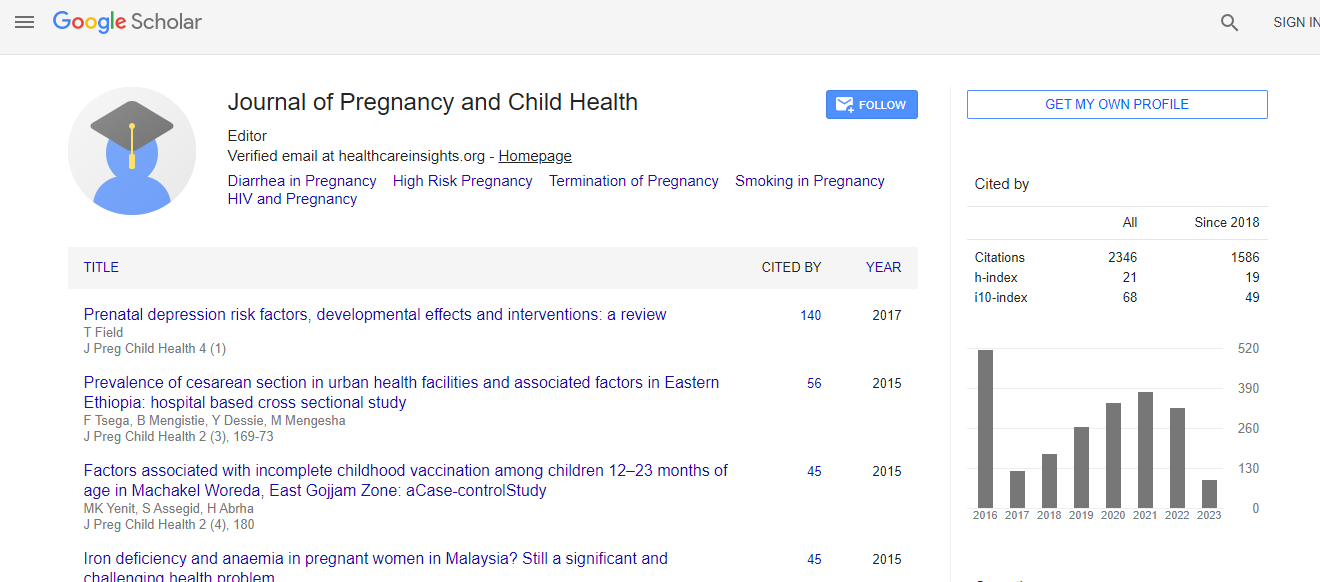Short Communication
Neurobehavioural Effects of Prenatal Exposure to Alcohol
| Garcia-Algar O1,2*, Carballo L2, Reguart N2 and Salat-Batlle J1 | |
| 1Grup de Recerca Infància i Entorn (GRIE), Institut Hospital del Mar d’Investigacions Mèdiques (IMIM), Barcelona, Spain | |
| 2Departament de Pediatria, Obstetrícia i Ginecologia i Medicina Preventiva, Universitat Autònoma de Barcelona (UAB), Barcelona, Spain | |
| Corresponding Author : | Garcia-Algar O Grup de Recerca Infància i Entorn (GRIE) Institut Hospital del Mar d’Investigacions Mèdiques (IMIM), Barcelona, Spain Tel: 0034639644139 E-mail: 90458@hospitaldelmar.cat |
| Received May 19, 2014; Accepted July 03, 2015; Published July 07, 2015 | |
| Citation: Garcia-Algar O, Carballo L, Reguart N, Salat-Batlle J (2015) Neurobehavioural Effects of Prenatal Exposure to Alcohol. J Preg Child Health 2:177. doi: 10.4172/2376-127X.1000177 | |
| Copyright: © 2015 Garcia-Algar O, et al. This is an open-access article distributed under the terms of the Creative Commons Attribution License, which permits unrestricted use, distribution, and reproduction in any medium, provided the original author and source are credited. | |
Abstract
Neurodevelopmental disabilities seem to be increasing in frequency and industrial chemicals (lead, methylmercury, polychlorinated biphenyls, arsenic, toluene, fluoride, chlorpyrifos, dichlorodiphenyltrichloroethane, tetrachloroethylene, polybrominateddiphenil ethers) that injure the developing brain are among the known causes for this rise in prevalence. (1) These substances have been identified as developmental neurotoxicants. Grandjean and Landrigan postulated that even more neurotoxicants remain undiscovered and proposed a global prevention strategy. (1) However, we must consider that the intimate prenatal environment is maternal uterus. So, not only maternal environmental chemicals but also maternal prenatal exposure or consumption of substances of abuse (nicotine, alcohol and drugs of abuse) that must be considered as developmental toxicants. Prenatal exposure to alcohol is the most prevalent and unrecognized cause of neurobehavioural deleterious effects around the world. (2) The proposed global prevention strategies must include to avoid the consumption of these substances of abuse during pregnancy.

 Spanish
Spanish  Chinese
Chinese  Russian
Russian  German
German  French
French  Japanese
Japanese  Portuguese
Portuguese  Hindi
Hindi 
